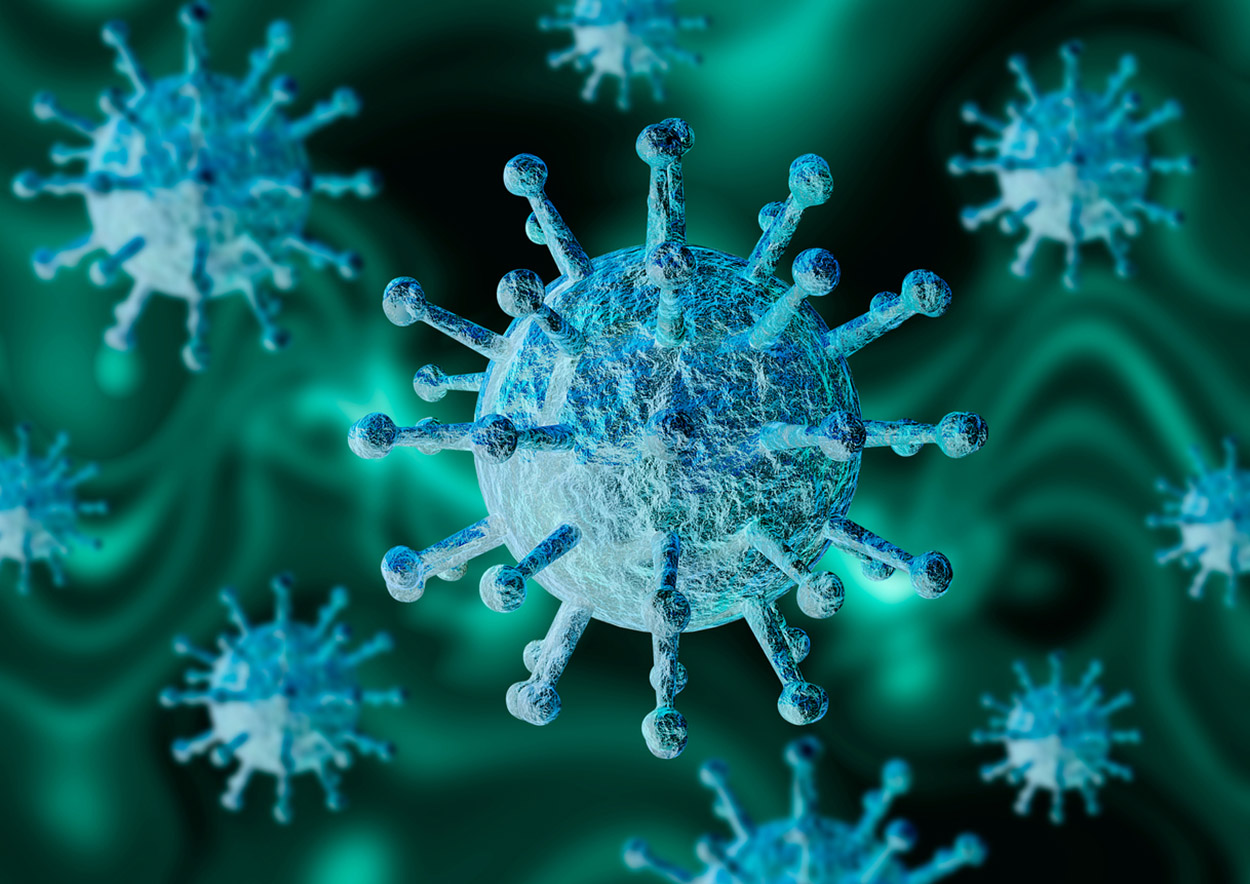
Effects of Ozone on Covid-19, Bacteria and Viruses
Ozone gas is much more powerful than other disinfectant methods. Ozone breaks down the cell walls of organisms and has a devastating effect on all known viruses, bacteria, fungi, yeasts and molds.
Viruses are small, individual particles made up of crystals and macromolecules. Unlike bacteria, they reproduce only inside the host cell. Ozone penetrates the nucleic acid core through the protein coat, destroying viruses and damaging viral RNA. Ozone used in higher concentrations destroys the capsid or outer protein shell by oxidation.
Effects of Ozone on Bacteria
Bacteria are microscopically small unicellular organisms. The body of bacteria is covered by a relatively solid cell membrane. Their vital processes are controlled by a complex enzymatic system. Ozone interferes with the metabolism of bacterial cells by inhibiting and blocking the work of the enzymatic control system. Sufficient ozone breaks down in the cell membrane, causing bacteria to be destroyed.
Effects of Ozone on Fungi
Fungi families that are inhibited and destroyed by ozone exposure include Candida, Aspergilus, Histoplasma, Actinomycoses, and Cryptococcus. The walls of mushrooms are multi-layered and consist of about 80% carbohydrates, 10% protein and glycoproteins. The presence of many disulfide bonds allows for oxidative inactivation by ozone. In all cases, however, ozone has the capacity to spread from the fungal wall to the organism’s cytoplasm and disrupt cellular organelles.
Effects of Ozone on Coronavirus
Ozone is effective in destroying many viruses and microorganisms such as legionella, sars, mers and swine flu.
Ozone gas, which is a highly effective sterilization product, is used for sterilization in living spaces because it destroys bacteria and viruses. Although we do not have any scientific studies on the effects of ozone on COVID-19 yet, James B. Hudson, Manju Sharma, and Selvarani Vimalanathan dated 2009, “Development of a Practical Method for Using Ozone Gas as a Virus Decontaminating Agent” Influenzavirus, Vaccinaviruz etc. in the study. Apart from viruses, a disinfection study with ozone gas was carried out in an area infected with Murine Coronavirus from the Coronavirus group, and no virus, including Murine Coronavirus, could resist ozone gas.
We share with you the relevant parts of the article titled “The Relationship between Health and HVAC in the Specific Coronavirus” prepared by Mr. Serdar Ulu and Mr. Aytekin Çakır about the effect of ozone on coronavirus.
Coronaviruses (CoV) are a family of viruses that previously chose animals as hosts, but in recent years, MERS-CoV (Middle East Respiratory Syndrome) and then SARS-CoV (Severe Acute Respiratory Syndrome) now infect humans with Covid-19 mutations, without oxidative protection. . The new coronavirus (nCoV) is a new strain that has not been previously identified in humans.
Coronaviruses are zoonotic, meaning they are transmitted between animals and humans. Detailed studies have found that SARS-CoV is transmitted from civet cats to humans and MERS-CoV from dromedary camels to humans. A few known coronaviruses circulate in animals that have not yet infect humans.
Signs of infection include respiratory symptoms, fever, cough, shortness of breath, and difficulty breathing. In more severe cases, the infection can lead to pneumonia, severe acute (rapidly progressive) respiratory syndrome (aggregate manifestation), kidney failure, cardiovascular disease and eventually death.
These risks can be overcome without slight symptoms, especially in children, since the relevant receptors that allow the virus to attach to the lungs are not fully developed.
Standard recommendations for preventing the spread of infection include regular hand washing, covering the mouth and nose when coughing and sneezing, and thorough cooking of meat and eggs. Close contact with anyone showing symptoms of respiratory illness such as coughing and sneezing should be avoided.
Technically speaking, the solution to the two problems seems easy using engineering. The infected person can sneeze in an open environment and scatter germ-carrying particles around. The detail to be noted here is that the particles will remain suspended in the air at a human height distance. If an effective air filtration system is activated in the same environment, the risk may be eliminated (with HEPA filter).
In addition to the filtration system for potentially infected area or infected area disinfection, field safety can be provided with Ozone Generator / UV (Ultraviolet) equipment to be integrated into the HVAC system.
These applications can also be carried out in the field with mobile units. The duration of the coronavirus family microorganisms against ozone is 0.3 seconds (Thailandmedical Academy).
0.03-0.05 ppm concentration in the environment gives very fast results in continuous application. In the shock application, it can be increased to 1-1.5 ppm (OHSA).
Application with ozone provides cleaning in general environments. However, because the Covit 19 virus is so new, clinical results are not available yet.
In order to prevent contact, it is important to rub the inside and outside of the hand with soap or detergent for 20 seconds within simple hygiene rules, and dry the cleaned hands with paper towels without touching another place.







